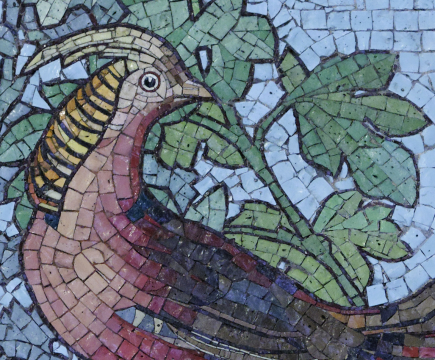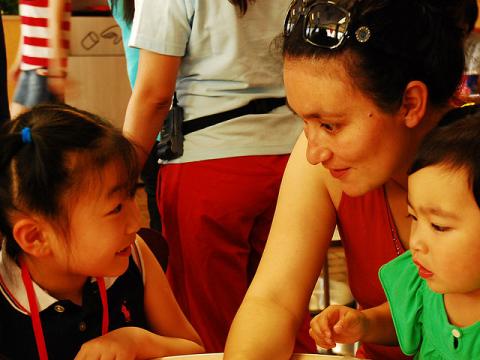Discussion:
Poverty is a debilitating worldwide problem that affects poor people directly as well as society at large. Although access to information and resources is critical to overcoming poverty and alleviating the problems of people living in poverty, poor people and anti-poverty advocates traditionally have less access to the Internet and other communications technologies.
Although poverty and computers do not make for an obvious alliance, it is clear the two worlds must connect unless we want to have a society where access to information and resources is only for those who can afford it.
Public access sites are rarely adequate to satisfy public need; users need people to help them do online research and free printers to print out forms and information. Hosts of public access sites need funding to keep equipment up-to-date and tech support to keep computers and Internet connections running smoothly. Lack of access to communication makes it difficult to connect communities in the anti-poverty world outside their local regions.
PovNet is a non-profit society created in British Columbia, Canada in 1997. It is an online resource for anti-poverty advocates and poor people, created to assist poor people and advocates involved in the communities identified above through an integration of offline and online technology and resources.
PovNet works with advocates and activists across Canada involved in direct case work and social action and justice. Some of these groups include:
* The National Anti-Poverty Organization (http://www.napo-onap.ca/), a national voice for poor people, working to eliminate poverty in Canada
* The Canadian Centre for Policy Alternatives (http://www.policyalternatives.ca/), a left-wing think tank doing research for change in social policy
* Canadian Social Research Links (http://www.canadiansocialresearch.net/), an all-inclusive resource for social policy information about poverty in Canada
* DisAbled Women's Network of Ontario (http://dawn.thot.net/), an online inclusive community fostering virtual activism and individual empowerment locally and globally
* The Canadian Feminist Alliance for International Action (FAFIA) (http://www.fafia-afai.org/home.php), a coalition of over 50 Canadian womens equality-seeking and related organizations organized to further womens equality in Canada through domestic implementation of its international human rights commitments.
* The Toronto Disaster Relief Committee (TDRC) (http://www.tdrc.net/), a group of social policy, health care and housing experts, academics, business people, community health workers, social workers, AIDS activists, anti-poverty activists, people with homelessness experience, and members of the faith community who provide advocacy on housing and homelessness issues and lobby the Canadian government to end homelessness by implementing a fully funded National Housing Program.
PovNet has become an online home for advocates in BC and across Canada. Its Web site provides regularly updated information about issues and policy changes.
Using PovNet resources is an interactive process. Advocates learn the tools because they find them useful in order to do the social justice and case work that they care about; poor and otherwise marginalized people find the Web site when they need information that is relevant to their lives.
For example, PovNet email lists have grown over the years into invaluable resources for specific campaigns (for example the Raise the Rates campaigns in both Ontario and British Columbia to raise welfare rates). They also provide an online support network for advocates working in sometimes quite isolated areas in British Columbia or in other parts of Canada.
As one advocate put it: "I love the PovNet list - on the lighter side there's the kibitzing going on amongst the subscribers which often brings me to laughter - always a good thing in this job. On the serious side - the exchange of ideas and generous sharing of experience is a huge boon to those of us who often don't have time to pick up the phone to seek advice from our colleagues."
Another subscriber says: "The lists that I am a subscriber provide me with first-hand current information on what issues are affecting BC residents and/or newcomers. I am able to provide useful information and referrals to some of the requests coming through PovNet lists. They are an invaluable and efficient resource for community advocates, settlement and family workers, especially those issues that are time-sensitive and need an immediate response."
Other PovNet tools include a Web site which is updated once a month with new information, online education and training courses (PovNet U) for poor people (for example the course, "Be Your Own Advocate") and for advocates ("Introduction to Advocacy," "Disability Appeals" and "Tenants' Rights"), as well as an online space for anti-poverty community groups to have their own Web spaces, calendars, and discussion boards.
PovNet is a flexible in that it can adapt to needs as specific campaigns emerge. For example, we set up an email list for a new campaign to raise welfare rates, and created an online hub for papers and press releases when a group of anti-poverty activists traveled to the United Nations in Geneva to speak on behalf of the social and economic rights of poor people in Canada.
Building a successful online movement in anti-poverty communities includes, first and foremost, the people. Start by finding local community workers who want to broaden their connections, getting together key people (without computers) to talk about what is needed and identify the technological limitations, communicate with advocates and activists in diverse anti-poverty communities, both urban and rural, First Nations, aboriginal, different cultural communities, disability groups, women, youth, seniors, workers, human rights and anti-poverty workers, and international anti-poverty workers.
Then identify the barriers, which could include access to the technology (education, money, literacy, language), how to share information, resources and skills between "have" and "have-not" advocacy communities (e.g. community advocates and advocates in funded agencies, etc.), researching how to provide online resources in languages other than English and how to provide an online space for poor people to communicate and access information via public access sites and interactive Web-based resources.
Barriers for advocates and activists using PovNet tools have changed over the years. Initially, fear of technology was a big factor. But as advocates observed its use as a communications tool, they taught and continue to teach each other. Money for computers and printers is an ongoing problem; as the technology demands higher-end equipment. For example, advocates in rural communities with dialup access get frustrated with attachments that take up all their dialup time. The anti-poverty work becomes harder as governments slash social services; the advocates have fewer resources to do their work. Technology cannot address such needs.
Despite the difficulties, the network continues to grow, establish links with other organizations both in Canada and internationally, and exchange ideas and strategies for advancing social change.










